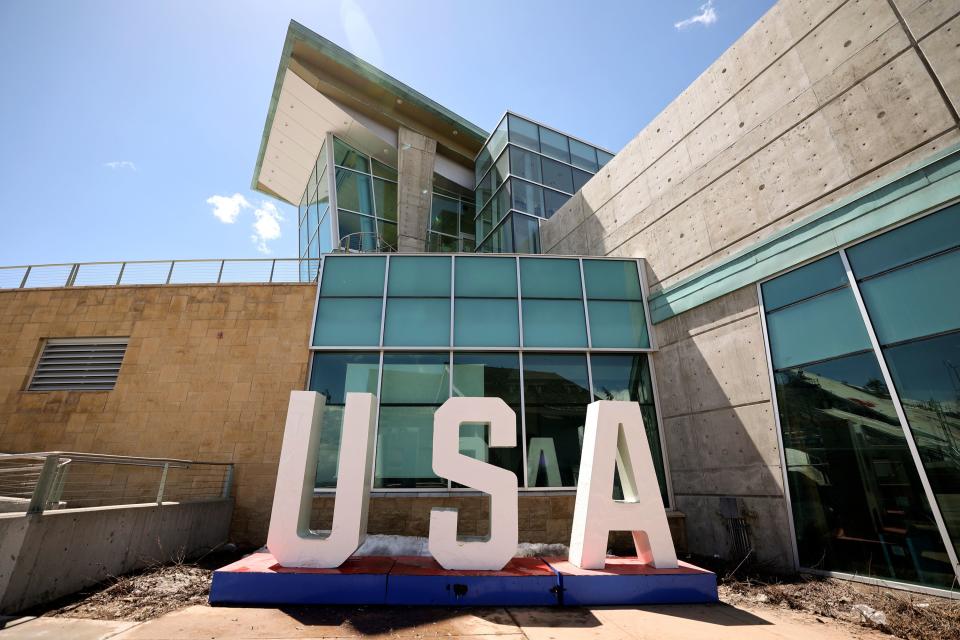Here’s how much money Utah taxpayers are spending on the state’s Olympic venues
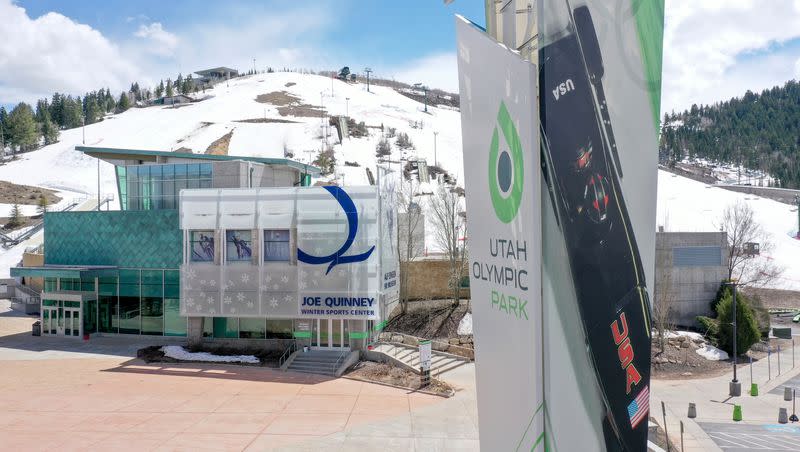
Many of today’s Utahns likely weren’t even born yet when the state’s voters approved a referendum that endorsed building $59 million in Olympic facilities with their tax dollars, long before Salt Lake City was awarded the 2002 Winter Games.
It was 1989 when the nonbinding ballot question passed that resulted in the construction of the bobsled, luge and skeleton track and ski jumps at the Utah Olympic Park in Park City and the speedskating track at the Utah Olympic Oval in Kearns.
More than three decades later, those and other venues remain key to Salt Lake City’s bid to host another Winter Games, thanks in part to what could add up to more than $140 million in additional taxpayer spending on Olympic facilities.
The money from the Utah Legislature — nearly $92 million so far — is coming despite a pledge by Olympic bidders that no state or local tax dollars are needed to host another Winter Games.
Related
“We as a bid committee are not asking for any of these investments,” said Fraser Bullock, president and CEO of the Salt Lake City-Utah Committee for the Games that’s behind the bid for the 2030 or 2034 Olympics.
Bullock said the tax dollars being spent over a decade are necessary “regardless of a future Games in order to keep our facilities operating to serve so many members of our communities, especially our youth.”
Rather than Olympic venues, “first and foremost, they’re community facilities,” he said, adding, “the nice side benefit is any enhancements that are made, we will make good use of during the Games.”
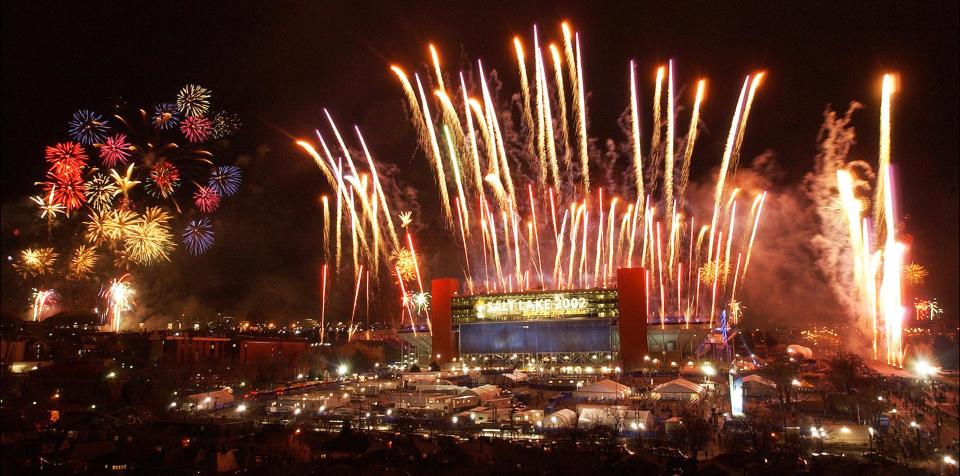
What Utahns invested in the last Olympic bid
American cities seeking to host the 1998 Winter Games were required by U.S. Olympic officials to commit to building a sliding track, ski jumps, speedskating oval and ice sheets so, win or lose, there would be new training sites for Team USA.
Salt Lake City agreed and was picked to bid on behalf of the U.S. for 1998 and 2002. But when the International Olympic Committee awarded the 1998 Winter Games to Nagano, Japan, in 1991, there were some doubts about proceeding with the plans.
Especially since the $59 million being set aside from state sales tax collections for the facilities was only projected to leave enough after construction costs to keep them up and running through 1996.
Still, Salt Lake City quickly jumped back into the race to host a Winter Games, negotiating a slowdown in the construction schedule with what was then the U.S. Olympic Committee to reduce operation and maintenance costs.
Instead of finishing the promised facilities by 1992, the new contract allowed for a two-year delay before work had to start on the sliding track and the speedskating oval. It wasn’t until June 1995 that the IOC chose Salt Lake City to host the 2002 Games.
Three years later, organizers of the 2002 Winter Games took over the venues as part of the deal made with the Utah Legislature to pay the state $99 million from Games revenues to reimburse taxpayers for construction costs and establish an endowment.
Once the 2002 Games ended, ownership of the park went to the nonprofit Utah Olympic Legacy Foundation that continues to operate it, along with the oval and another venue from 2002, the Soldier Hollow Nordic Center that’s located in Wasatch Mountain State Park.
The foundation ended up with a larger endowment from the Games, a total of $76 million. Olympic organizers also spent some $65 million on the trio of legacy facilities, including a dramatic new roof for the speedskating oval.
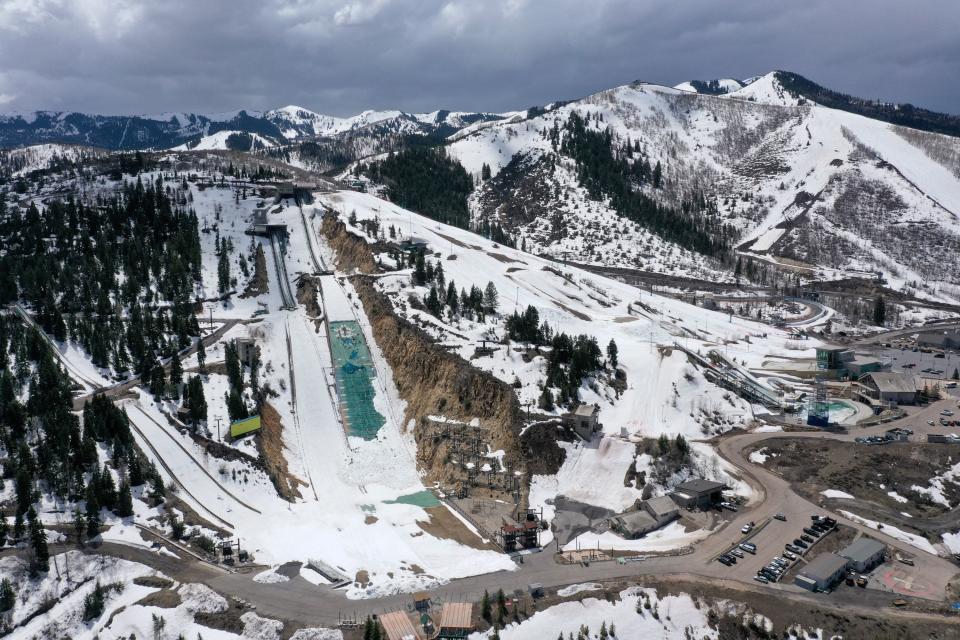
Where the money comes from
The foundation has spent more the $234 million to run the facilities, investing nearly $80 million in capital improvements, members of the Legislature’s new Olympic and Paralympic Coordination Committee were told at their first meeting in mid-June.
The endowment has dropped to around $46 million but the foundation has raised money through private contributions as well as local sources. There are also revenues from activities added over the years.
Those activities include tours as well as $100 summer bobsled rides at the Olympic Park, $30 curling lessons at the oval, and $49 for coaching in biathlon target shooting at Soldier Hollow.
Lawmakers stepped in after a 2017 legislative audit of the foundation recommended the state allocate $39.3 million over 10 years “to bring assets up to current day standards and sport-specific technical requirements.”
By 2028, when a 10-year agreement with the Legislature to provide what’s anticipated to be $44 million to the foundation is due to expire, the total expenditures may exceed $140 million.
That’s because in addition to the money committed to the three legacy venues, lawmakers created a separate funding source now called the “Olympic and Paralympic Venues Grant Fund.”
The fund can be tapped by other nonprofit and government facilities, and about $9 million so far has gone to Olympic venues not operated by the foundation, including the Maverik Center in West Valley City and the Peaks Ice Arena in Provo.
The 2023 Legislature agreed to put $40 million in the fund, after adding $22 million last year. The foundation had sought $79.8 million in state funding this year and $66 million in 2022, so more money is expected to be sought.
Related
“I know the numbers sound large,” Colin Hilton, the foundation’s president and CEO, said. “But we are being, in my opinion, very appropriate in our spending to balance the community uses and the uses of these facilities for a future Games.”
The facilities provide a place for elite athletes from around the world to train and compete, as well for those building on their skills, trying out a new sport or just looking for a recreational thrill.
Much of the focus is on the 400-acre park, where the list of improvements made since 2002 include adding ski runs set to serve as a future Olympic venue and affordably priced dorm-style housing shared by employees and visiting athletes.
There’s still work that needs to be done there, like replacing the plastic grass used in warm weather on the 120-foot ski jump that’s been repeatedly patched over two decades. Last winter’s record snowfall resulted in an avalanche that damaged the massive jump.
Plus there are big expansion plans for the only facility owned as well as operated by the foundation, with space already set aside for more housing. The park employs a total of 650 people, including 150 who work full time throughout the year.
More than $55 million of the $132 million in capital improvement projects the foundation outlined to lawmakers are at the park, including building an $18.5 million state-of-the art sports medicine and performance center entirely with state funds.
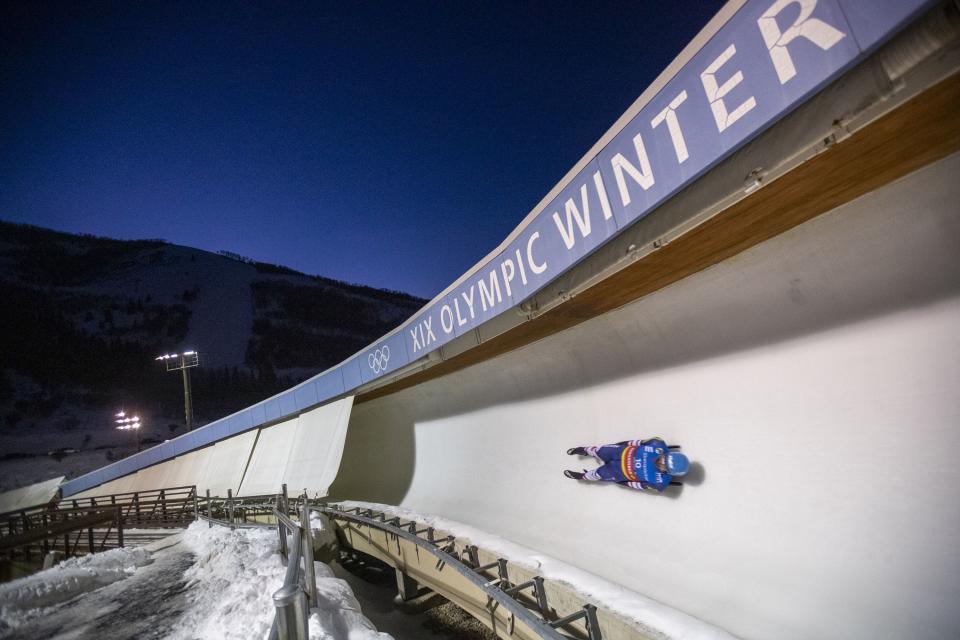
Not just for the Olympics
Hilton said the state’s original goal in building the facilities was always not just to be ready to host an Olympics, but also to use them for at least 20 years, something the foundation did on its own for much of that time.
“As we got closer to 2020, we realized we wouldn’t be able to pay for all of the upkeep costs of the legacy facilities in the state of Utah and that we needed help. We brought that to the Legislature. The Legislature agreed to help,” he said.
What’s being done, Hilton said, “is enhancing the Olympic venues to support winter sport in the state of Utah. These are for everyday support of athletes training and hosting events,” as well as providing community uses.
“We make the distinction that these are costs that we would do regardless of whether a Games is awarded or not,” he said. Still, what Hilton called Utah’s unique approach of making the facilities available to all does appeal to the IOC.
“That quite frankly, is the model that we think is attractive to the Olympic movement,” he said, adding the state is “continuing this investment in our winter sports facilities because it’s an everyday element of what Utah feels is great to get behind.”
Utah has been pursuing another Olympics for more than a decade, but it wasn’t until December 2018 that what’s now the U.S. Olympic and Paralympic Committee selected Salt Lake City over Denver to bid on behalf of the country for a future Winter Games.
From the beginning, the promise has been that no state or local tax dollars would be needed for what is now more than a $2.2 billion budget for hosting one of the world’s biggest sporting events,
The budget to host in 2030 or 2034 — which does count on the federal government to provide security, just as it does for the Super Bowl and other major events in the United States — includes $26 million to ready the venues for the Games.
There’s also $250 million set aside for both the foundation and the Utah Sports Commission that’s responsible for attracting regional, national and international sporting events to the state.
Bullock said he hopes another Winter Games in Utah will be able to leave a large enough endowment for the foundation to fund future projects at the facilities. The bid leader said that’s “a lofty goal ... but it’s possible.”
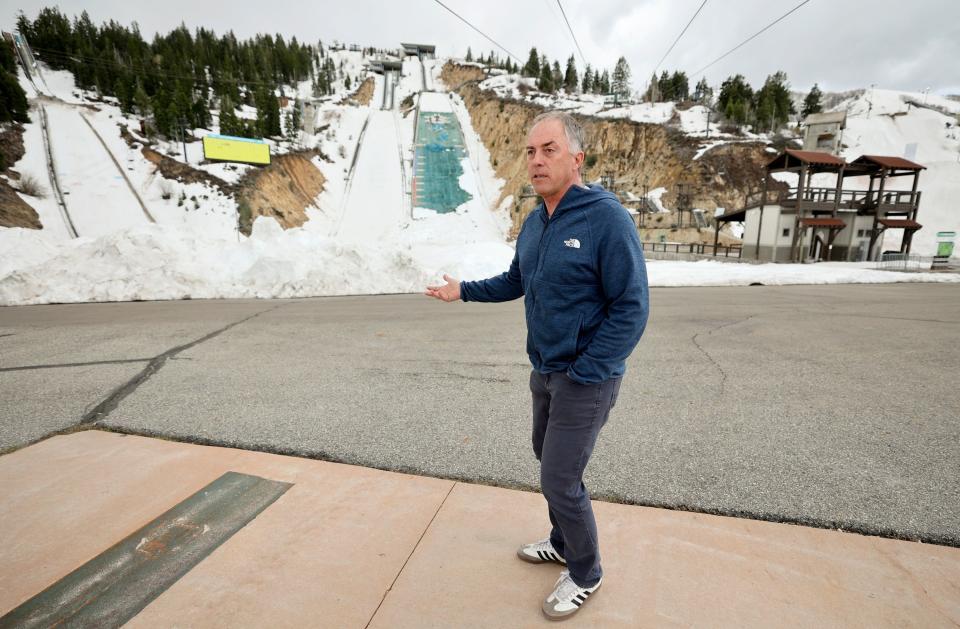
What the spending means to Utahns
Matthew Burbank, a political science professor at the University of Utah who’s authored books about the Olympics, said given how much money is going into the facilities, he believes most Utahns would likely want to see their tax dollars spent elsewhere.
“If they saw the bottom line numbers here and were asked, ‘Do you want to spend this on hosting a future Olympics or would you rather spend this on education, tax cuts, whatever other things we could spend it on,’ I’m guessing that hosting the future Olympics would be way down most people’s list of priorities,” Burbank said.
Utahns have backed the latest bid in a big way, with more than 80% saying they support bringing the Olympics back to Utah in a Deseret News/Hinckley Institute of Politics poll conducted in January.
But the professor said there should have been more public discussion about “the best course forward” for the facilities before the state started spending taxpayer dollars on them again.
That’s what happened before the 1989 referendum that voters ended up approving even though it meant, in effect, building $59 million in Olympic facilities with no guarantee the Winter Games were even coming to Utah, let alone that the event would be profitable.
“Salt Lake did that better than just about any place,” Burbank said of giving voters a say back then in whether they wanted to back the bid financially. “In that day and age, that was really quite unusual.”
This time around, he said any public debate over whether the tax dollars could be better spent elsewhere never really materialized because any focus on the total price tag for the facilities has been avoided.
“What you have seen in this process is they never come and say, ‘Oh, yeah, we need this huge amount of money, we need $100 million over the next 20 years. Let’s have a big legislative debate on that.’ No,” he said.
Instead, Burbank said, “for very strategic reasons, the people who are asking for the money and the people who are allocating the money have done this in increments. Why? Because they don’t ever want to have it ever be a really big chunk of money.”
Natalie Gochnour, director of the University of Utah’s Kem C. Gardner Policy Institute and a member of the foundation board, said she’s always viewed state spending on the facilities as an investment in Utah’s future.
Related
Here’s why a new study says Utah is ready to host another successful Olympics
Why the economic impact of another Olympics in Utah would be less than in 2002
“I think this was always about investing in a winter sports capital. It was always about investment in winter sport. It was always made clear this wasn’t solely focused on the Olympics, but about an important attribute of our economy and our way of life,” she said.
Gochnour said maintaining the facilities is important to Utahns with or without another Winter Games.
“All of us are able to use them. Even if you don’t use them, they create economic impact,” she said. “This is a very beneficial part of the Utah economy that has performed well over time, that’s well-managed, that’s part of a movement that has public support.”
As an economist, Gochnour said she looks at the spending “as one of many investments that keeps Utah’s economy diverse, that provides fabulous amenities for residents and that capitalizes on one of our strengths that is our winter sports offerings.”
